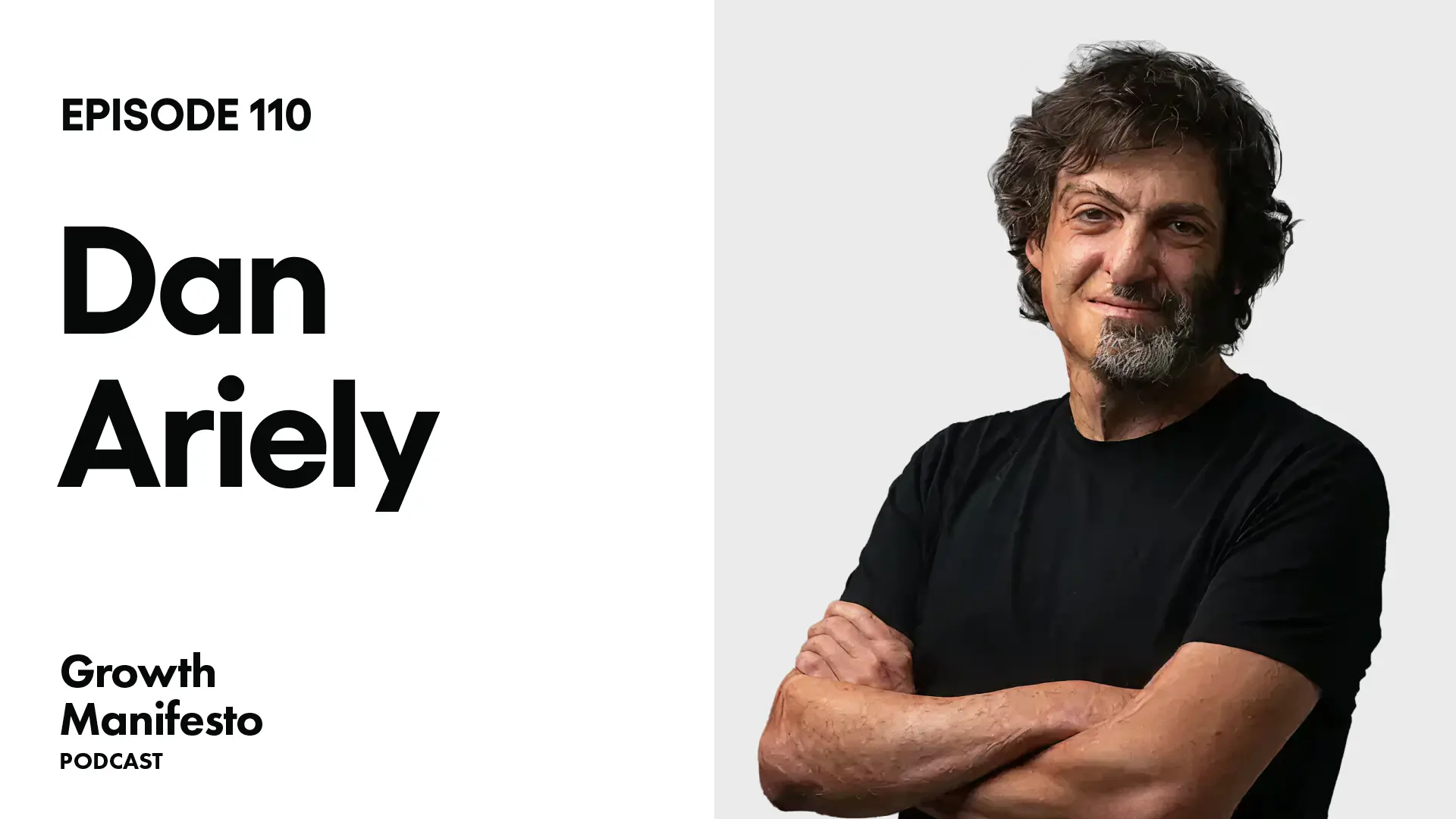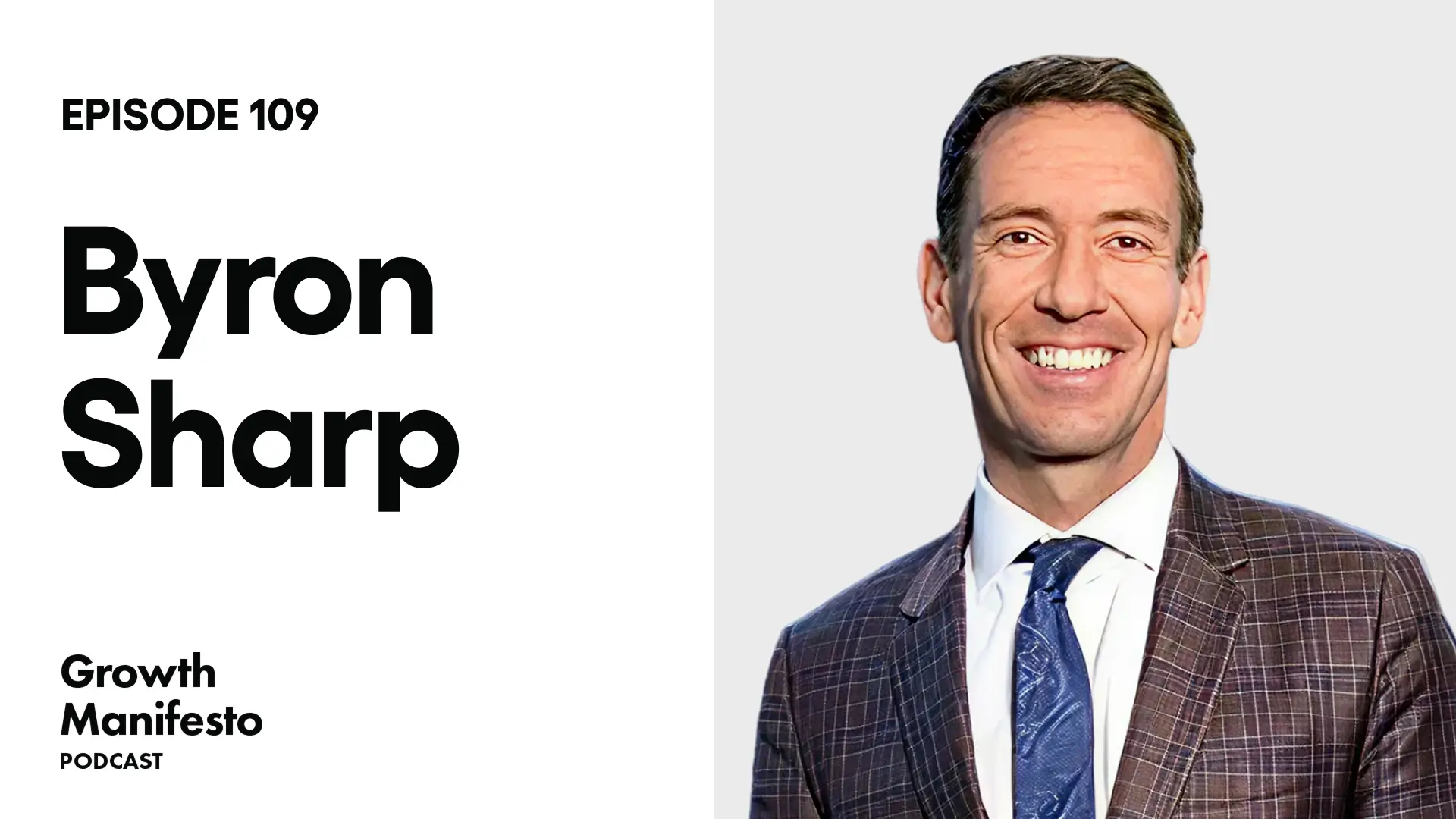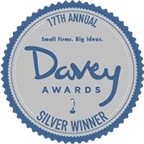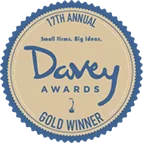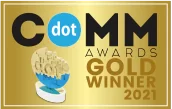How to build resilient and thriving teams
In this episode with talk with Jim Harter – Chief Scientist of Workplace Management and Wellbeing at Gallup, and author of 3 bestselling books – about how to build resilient and thriving teams, which is the focus of his latest book, Wellbeing at Work.
LINKS
—
You’re listening to The Growth Manifesto Podcast, a Zoom video series brought to you by Webprofits – a digital growth consultancy that helps global and national businesses attract, acquire, and retain customers through digital marketing.
Hosted by Alex Cleanthous.
- YouTube: https://www.youtube.com/c/GrowthManifestoPodcast
- Instagram: https://www.instagram.com/webprofits/
- LinkedIn: https://www.linkedin.com/company/web-profits/
- Facebook: https://www.facebook.com/Webprofits/
- Twitter: https://twitter.com/webprofits
- Agency: https://www.webprofits.io
SHOW NOTES
- 00:00:20 Jim Harter introduction
- 00:01:53 The best way to get the data
- 00:02:34 Wellbeing at Work book inspiration
- 00:05:26 How technology has helped and changed during the pandemic
- 00:09:40 What is wellbeing and thriving?
- 00:12:50 The 5 key elements of wellbeing
- 00:14:43 The responsibility of the employer to an employee’s wellbeing
- 00:19:12 Personal questions employers can ask their employees
- 00:24:39 Developing wellbeing programs inside of a company
- 00:30:20 What role does resilience play in this formula?
- 00:36:55 The key takeaways from the book Wellbeing at Work
TRANSCRIPT
Jim Harter:
Start by engaging your workforce through your managers. You can get to wellbeing a lot faster if you start with the work related basics like again, clarifying expectations, getting people what they need to do their work, recognising them at the right times, et cetera.
Alex Cleanthous:
This is Alex Cleanthous. And today we’re talking with Jim Harter, who’s a chief scientist of workplace management and wellbeing at Gallup, an author of three best selling books. And today we’ll be talking about how to build resilient and thriving teams, which is the focus of his latest book, which is called Wellbeing at Work, which is a fantastic read. Hello and welcome, Jim.
Jim Harter:
Hey Alex, great to be with you today.
Alex Cleanthous:
Yeah. Fantastic to talk to you as well. Let’s get straight into it. This is a really interesting book because it’s based on over 100 million interviews and there’s not that many books that are based on that size data. And so first thing is how do you actually get this data before we get into the thinking behind it?
Jim Harter:
Sure. Many people know about Gallup through our polls. They think about us as a polling organisation, but also we conduct global polls. We’ve got the only true world poll of representative samples of the global population, both people who work and don’t work age 15 plus. But we also do a lot of deep dives into organisations. We have thousands of organisations that we work with, where we actually conduct census surveys inside their populations to help them understand their workforce, understand what people are thinking inside their organisation. We really believe that leaders need to know what the followers are thinking if they want to make the right kind of decisions. Not that they need to make every decision that the followers say they should, but they need to be at least informed. Because when the people in society become disgruntled bad things happen. When they’re engaged and excited about things then good things happen.
And so we need to understand what leads to that. So we conduct studies inside organisations. That accumulation is most of the data that you’re referring to, but also our polling data makes up a lot of it. One of the cool things about working at Gallup is that we can do these in depth studies inside organisations and learn what links to business outcomes, what leads to thriving lives and then put it on a poll and see what the whole population thinks about that topic. So we kind of go back and forth between those two things, what works inside organisations, and then try to understand what the rest of society’s thinking about it.
Alex Cleanthous:
So with so much data, it would seem to me that it would be challenging to figure out what questions to ask about actually, how do we use this data? And so how did you get the idea for this book?
Jim Harter:
Well, this book happened during COVID. COVID is still going on, obviously. But we knew even before COVID hit that there was a real need for a trend toward people seeing that work and the work life kind of continuum and the work life intersection was becoming more and more important to people. The younger generation was telling us that we expect our employer to improve our overall lives. And flex time at work was the number one desired perk, then boom COVID hit and suddenly these all kind of became realities even more so. So it became accentuated. We had all this data built up. We just published a study right as COVID was hitting that showed that engagement at work matters even more during tough times. So that ended up being timely. It just happened to be a coincidence that we happened to get it published right then. But we were able to leverage a lot of our resources.
We’d already been conducting massive polls, as I mentioned earlier. But we had also been conducting a poll pretty much every day during COVID to try to keep track of things as they happen. And so we keep abreast of the most timely topics. We have a round table of organisations that give us input into the issues they’re facing. And we watch the media very closely, get interviewed by the media a lot. Of course, we get questions from them. We listen to the organisations we work with and the issues they’re facing. And so we get a lot of insights into what theoretically might matter inside organisations and then we study it and see what really does matter by looking at what elements of work and life link to people thriving in their overall lives and being more productive and less likely to leave their organisation and all those kinds of outcomes that are important to people right now.
Alex Cleanthous:
Yeah. And there has been quite a lot of conversations about the great resignation or the great aspiration with so much transition kind of happening across companies, across organisation, across industries, where staffing was very volatile. And it does seem that the context of this book and some of the ideas out of this book, they came to the fore because all of a sudden it wasn’t basically just about the one thing. It was a multitude of factors that other team members actually started to consider because all they had was work. And then after work, you switch off Zoom and then you’re at home and then that’s that. Right.
And so it seems that historically you may have had a job that was okay. And that was okay because the social side of things, or it could have been something else in terms of the corporate ladder, but then all of a sudden, now we’re all at home. Now it’s like, it’s very focused. It’s very condensed. It’s about the individual and there’s nothing outside of the individual, quite a lot of times, except for the Zoom calls. And Zoom is not the same as before, is it’s? Its changed how business is these days. Is that a good statement to make? Is that a correct statement to make, I guess?
Jim Harter:
Yeah. Well, the first thing I said when COVID hit, one of the first things besides holy crap, this is not a minor thing. This is going to last a while, was, thank God for technology. It did change the way we work, but it also brought about a couple things I want to say to that. It brought about a realisation about how much of our work is independent and how much of it can be done independently and how much of it can be done in a collaborative sense in this fashion. I think we saw some gaps between the collaborative part and a way to fill those holes. Your other point about multitude of factors is a really important one to think about. Usually when we see people move from thriving to struggling, which we saw a lot of during COVID, it’s not one thing.
People are very resilient to one thing going wrong. But it affected us in so many different ways. It affected how we think about our jobs. It affected how we think about our social lives. It affected how we think about our finances, and there’s some insecurities around that during the pandemic. It affected how we think about our physical wellbeing, of course. I guess that’s the obvious one. And then it affected how we interact with our communities. So those are five elements that I just listed off that we have found are generalizable elements to people having a thriving life that were all impacted to some extent. And when that happens, you’re going to see wellbeing change. You’re also going to see people reconsider what they think that work life kind of balance should be, or intersection should be in an ideal sense. I think people had a real chance to reflect, and that was sort of a build up.
And when COVID hit, there were some furloughs and layoffs and I’ve never seen such a dramatic shift. We ask a question, is this a good or a bad time to find a job? I’ve never seen such a dramatic shift down in terms of a good time up in terms of a bad time and then it changed completely several months later where suddenly people had all these opportunities to find work and they acted on them because of this buildup of people had a chance to reflect, to see work a little differently than they had before and to see what other opportunities are out there too. And that led to, you called it, I think, the great aspiration.
Alex Cleanthous:
Well, it’s been called both, right. It’s called the great resignation and then there’s the positive spin, which is the great aspiration as well.
Jim Harter:
And we’ve been kind of referring to it as the great reshuffling because it wasn’t like a bunch of people just suddenly dropped out of the workforce and quit working. They found other work that might have paid them the same amount or more that was just different. Maybe they learned that dealing with customers wasn’t the right thing for them or whatever. There are some shifts though in people and unemployment rates now, at least here in the US, are really low. And there’s a lot of hiring, but also a lot of job openings. So there’s still that big gap where the employee now has some say in the matter. Is it the same in Australia?
Alex Cleanthous:
Yeah. The unemployment, the rate here is extremely low. And especially in the technology roles, it’s very low. It’s very hard to find strong talent. And this is where actually having a company, a place where people actually prefer to work at because it hits as many of their, I guess, requirements as possible. And it’s not just about money. It’s not just about social. It’s not just about a specific thing. It really seems to be that there looking for something that they can completely, I guess, completely invest in and to be challenged in and to be around people that are nice. Right. Because this is the way that they’re going to actually have friendship sometimes and actually have a social circle.
So it does seem to put a lot more pressure on the company, on the leadership of the company to create that culture. And I do think this is going to be a good conversation just to help organisational leaders kind of think about that in a bit of a different way or potentially in a bit more of a holistic way and not just about the one part. But just quickly now, because there’s a couple of definitions which I just want to ask about. The first one is wellbeing and the second one is thriving. So could you just quickly explain those? Because I do think it is important to actually have a common kind of understanding on the definitions.
Jim Harter:
Wellbeing, think of that as an overarching kind of term, for everything that goes into how we experience our lives and how we evaluate our lives. So two parts of wellbeing. One is we go through our days, we have our experiences, our momentary experiences. We can also sit back and reflect on our life and say, here’s where I’m at right now. Am I satisfied with that or not? Both of those parts of our brain are important because they affect how we make different decisions. But wellbeing overall is how we experience our life and how we reflect on our life. Thriving is a more specific definition within wellbeing, where we ask people… We borrowed a question from a psychologist named Hadley Cantril. He was at Princeton and decades ago he developed the scale he put on the ladder. The ladder goes from zero at the bottom to 10 at the top.
And the top is the best life possible. The bottom is the worst life possible, and anybody can sit there right now, wherever you’re at and think about where am I at on this ladder right now? And then there’s a follow up that we think is really important. And we ask them where they’ll think to be in five years. And everybody can sit back and think, well, I can kind of project out a little bit and I can think about where I’m at. Think about that as hope. Right. My hope. The natural state of human beings is to be more hopeful about the future than the present. In fact, when we’re tracking this during COVID people maintain their hope for the future that the present life dropped, but their hope for the future stayed the same. Which is really positive, because it’d be a desperate state if…
When people start dropping on both of those two elements of that ladder, that’s when it becomes pretty desperate. We’ve seen uprisings in different parts of the world and that preceded, even though GDP was going up, it preceded the uprisings, or Brexit’s another example. So we’ve been able to track this kind of thing globally. So thriving, technically seven or above on the latter present, eight or above in the latter future. That’s thriving. And any organisation can add that two part question and figure out, or any individual can do it as well and quickly kind of assess where they’re at. We determine that based on empirical data, looking at how that scale relates to various outcomes for people.
Alex Cleanthous:
Great. And so what we’re saying right now is that it is the responsibility or it should… Well, it should be the focus of employers of leaders in an organisation to think of the full wellbeing of their teams. And I think this is maybe the biggest shift I’ve seen since COVID started is before a lot of employers will pay for a job and just get the job done. And now it’s like, well, Hey, if you want to keep me, I need something that’s a lot more than that. And so thinking about the full wellbeing in terms of your teams is critically important. Now that means that not everybody is going to probably stay because sometimes the role itself is not going to be enough. And so you might actually hit social, the cultural, the physical and all that, but something’s missing. And so you talked about the five areas. Are there some that are a lot more important than others in terms of sustaining a high performance, I guess, culture?
Jim Harter:
Well, the first thing I’d say is if you’re suffering in any of those five, the five again are career wellbeing, social wellbeing, physical wellbeing, financial wellbeing, and community wellbeing. And if you’re suffering in any of those, then it’s a pretty desperate state and you need to fix that. So it might be because you’re in a high crime area, and you fear for your life, or it could be because you’ve got a physical ailment that gives you physical pain on a daily basis that you just can’t stand, or it could be that your social life is so lonely that you’re becoming depressed. And so that needs to be taken care of. Or in work it could be that you just hate your boss and your job, and it’s bringing you down and it’s causing stress and again, negative states of mind, and you bring that home with you and all that.
So if you’re suffering any of those, you got to take care of that. All things being equal, though, there are two elements that are more foundational than the rest. When I say foundational, they kind of set you up to be successful in the other three. The first and most foundational is career wellbeing. If we think about how much our work affects our overall lives, it affects what we do every day. The interest we have. It affects… It’s most of the time we spend outside of sleeping. It’s most of the time… If you’re in a job right now, even if you’re retired, what you do every day, what you say you do is part of your career and you better be thriving in that if you want to maximise your time. It affects our finances. It affects our social lives. Our work affects our physical wellbeing, a lot of data on that, and some of what we’ve generated ourselves. And it affects our perception of our standing in our community.
The second one is social wellbeing and it’s important because the people in our lives that we spend time with impact how we interpret the rest of our lives and who we share things with. And if we’re doing things with other people and we’re feeling good about it, we’re more likely to maximise the other elements that we’re trying to get right. And the good news is for organisations that are working on employee engagement in the way that we prescribe it, they’re already working on career and social wellbeing. Those are embedded in that. And that’s career and social wellbeing, again, are foundational to getting the other ones right. They start to create trust. And then if you’re in an organisation, when you have trust, you can offer people ways to improve their wellbeing and they’re not going to second guess you, or doubt you, or think you’re just doing this for a programme to try to make me feel good. So that’s how I think about it from an order standpoint and what our data would suggest from that standpoint.
Alex Cleanthous:
Okay. So the top two are career and social. The other three, the financial wellbeing, the physical wellbeing and the community wellbeing, how much of that is the responsibility of the employer, the company, the leadership?
Jim Harter:
Well, I think that if you compare wellbeing to engagement, engagement is all mostly influenced by what happens at work. It’s whether you have clear expectations, a clear role, it’s whether you have someone at work who cares about you, who recognises you when you do good work. The things that everybody wants, you’re human nature when you come to work. We want to be recognised when you do good work. We want a chance to do what we do best. We want a chance to develop and see a future in the organisation. We want a mission that we can connect to that really makes us feel important in the work we’re doing. And we want friends at work too. That’s part of our social being. Those are all directly influenced by the manager.
Now the organisation and the manager can impact those other three in a couple of ways. One is to provide offerings inside the organisation that align with those other three, and that people can clearly see here’s why they exist. For starters, leaders need to be really clear about why they think wellbeing is important. People aren’t going to know unless you tell them. And so a couple reasons that I think are really legitimate. One is that you want to improve the resiliency of your workforce. Just be really open and honest about that. We want a resilient workforce. If times go bad, we’d need to be resilient. If times are good, we want to thrive and we want to race past the competition. If you’re in a competitive business. So that’s one, the other is organisations now and going forward need to build a brand, a real culture that attracts the stars. You mentioned earlier, Alex, that it’s hard to find stars.
You’re going to have a really tough time finding stars if you don’t have an authentic culture that gets people what they’re looking for in work, which isn’t just work. It’s also, I want to improve my life. So the statement that leaders make is really important. Second, those offerings that I was talking about that align with the elements. They can be some pretty creative things, and they can come from just listening to people and what’s going on in their lives and what kinds of things they need. But the big one is upskilling your managers to have the right kind of conversations. What we would call one meaningful conversation a week. And a meaningful conversation means that you know something about their work, you know something about their strengths individually, you know something about their life, so that you can give them the right kind of feedback that is useful to them. You know something about their goals. What goals they’ve set and what they’re trying to achieve and how they’re progressing on those.
And we can upskill managers to have the right kind of conversations that open the door to first engage them. But then secondly, to say, I know this is going on in your life right now. Here’s some resources we have as a company that might help you with that, or here’s another person that’s on our team that’s going through something similar. Within confidence of course. You’ve got to maintain confidence in these kind of things. But I think people too often initially say, well, the organisation can’t touch this area because it’s too sensitive.
Well, it is sensitive, but there’s a lot of ways that organisations can take a leadership role. They certainly can… I mean, part of wellbeing of course, is there’s an innate component. What’s thought of as a set point. We all have different set points in terms of how happy we are. But there’s a lot of room to move above that set point and that’s where I think organisations can have an effect. They can start with engagement, build some trust and then upskill your managers to have open conversations with people about what the organisation can do to help them out.
Alex Cleanthous:
It sounds like the lines between professional and personal are starting to get a little bit more blurred in these types of conversations, because now you’re trying to understand what’s happening to them personally. What are some example questions, say, for example, look, the one question which you could ask to find out about something’s personal, but that doesn’t step the line. Because I would feel that there’s a trepidation for managers to ask the wrong thing that then HR gets involved. You know what I mean?
Jim Harter:
Yeah. Yeah.
Alex Cleanthous:
Just to try to find that connection, but not to make them uncomfortable. I guess that’s part of that process. Is there any examples or are there any specific resources that they could look at or anything like that?
Jim Harter:
Well, we did include in Wellbeing at Work, the book you referred to, a manager guide that helps managers have those kinds of conversations. I would also argue though that it’s not necessarily having the perfect question to ask. The first thing you want to do is get them what they need as a worker. And then the conversation just happen naturally. They’ll probably just open up and share things with you that might be getting in the way of their work. The most natural way to do it is to do it through getting the elements of work right, which means giving them a role that’s meaningful, helping them see how they’re achieving over time, building what I said earlier, trust, so that they will naturally open up.
The other thing that I’ve found works is to bring peers together and get ideas. Wellbeing can really grow through peer networks because people can say, well, this person’s on the same level as me. They’re going through similar things from me. Their ideas are legitimate. I don’t have this person that’s paid more than me telling me how to improve my life. So I think that that’s an important element.
A third thing I’d mention, Alex, is that to open up these conversations and make them what I’d call less awkward and more natural is to start… The starting point is so important. Start with the individual strengths. We have worked on measurement of strengths for decades. We have a tool called CliftonStrengths and it’s been used by 20 some million people. And it’s a popular tool because it does give people insights into how they think what their natural thought patterns are. And we’re all different. Anybody that’s had multiple kids knows that they come out different and maybe that’s part of the grand design. We you can all attribute our own theories to that.
But people do come out different and they think differently. And we’re trying to put some words around this person sitting across the room from us. And we sometimes will say, why can’t this person be more like me when maybe they are in some ways they didn’t know about, and another side of it, maybe they’re different in a way that compliments me and I can put some language around why they are who they are. And when we start with an individual strengths, they’re innate kind of capacity for excellence, we start to remove those barriers. And an employee for a manager can say, this manager knows me in a different way than he or she ever has before. And they also expose their own strengths and maybe some of their own limitations in a way that’s transparent and it feels like there’s a different starting point here going on.
So it would be awkward if let’s say I’m managing you for five years and suddenly I come to you and I say, so what’s going on in your personal life? How’s things going? How’s your social wellbeing? How’s your physical wellbeing doing? You’ve been running? You’ve been working out? That’d be pretty awkward. But it can happen naturally if I say, okay, here’s a new starting point I want to try out. There’s this strengths tool and it’ll give us some insights into how both of us think, and let’s consider that and let’s discuss how that affects our work, how we work together. And that starts it going, and then I help you take care of your work, help you use your strengths to affect how you do what you do best every day to affect how you work with other people and affect how you reach your goals. And then suddenly there is that thing I was calling trust that’s developing and there’s just more open conversations and the manager doesn’t have to force it. Sorry, that’s a long answer to your question.
Alex Cleanthous:
No, no. That’s got a tonne of content in there. That’s a lot of great takeaways because that’s something that’s actually actionable. Whoa, actually actionable. Actually actionable. But what this is showing is just how important the manager is. And it’s always been important, but now there’s for a lot of organisations and we’re going in and out of base having to stay at home or not. There’s all the waves. And so now we’re home and now we’re not home and there’s all these kind of hybrid environments and so on. Now the manager is oftentimes the only, I guess, engagement across the company sometimes. Right. Because it’s on Zoom. There’s not the workplace environment that can have a look around. I can sense the vibe. I can have the small little chats. And so now the manager is critically important as part of their engagement. And so something I always just reflect on is that company’s not the company just for the team, company is the manager.
And so what can companies provide in terms of training to ensure that kind of the managers are doing it the right way or that there’s the right kind of thing? I mean as you talk about creating the wellbeing programmes inside of a company, is that the way in, is actually creating some kind of structure? Is that a way to just ensure there’s consistency across experiences? Because if someone has a great manager, it’s like having a great teacher at school. All of a sudden that class is awesome. And then you go to that class, I hate that class because the teacher wasn’t kind of the same. So does a wellbeing programme set a level of consistency or is it just more training individual or training the managers to just be better managers? So what’s the way in just to ensure that consistency of experience?
Jim Harter:
Yeah. Well, first you’re right on that the manager is such a critical component here. And actually, Alex, the manager’s always been important. Historically, as explained 70% of the variance in team engagement is attributable to the manager. So what organisations can do… I’d also say the manager’s job is even more complex now because of everything going on. The managers report more burnout, increasing levels of burnout because of all the things going on. So getting their role right and getting them skilled in a way that they can have the right conversations is first and foremost, I’d say one of the highest priorities of an organisation. So you could have the best wellbeing programme in your organisation, laid out at the top of the organisation and it could be implemented miserably if you don’t have managers who are skilled the right way. Because most things that impact both engagement at work and wellbeing are situational.
So when you say, can there be a standardised programme? There can be standardised… Gallup is developed this, we call it a coaching manager journey. So the key to that whole phrase is journey because you can’t assume that one class is going to fix somebody and the way that it is standardised, but it’s also individualised, if that makes any sense. Individualised through the strengths of the person and the people that they manage. So the starting point is get to know the strengths of the people, teach managers how to have the right kind of conversations with knowing their strengths and the strengths of the people they manage. That’s one thing. Teaching them the science based concepts of engagement and what actually reliably links to outcomes that they can do something about like clarifying expectations, getting people recognised for doing good work when it’s on a regular basis and putting people on developmental path, helping people see how their work connects to something bigger, how they connect to their coworkers, all these kind of elements of engagement. They could be taught how to maximise those.
And then we got to feed into that performance management also. So performance management isn’t as complex as it might sound. It’s about three things really. It’s about helping people set their goals. They’re aligned with what the organization’s trying to get done. It’s having ongoing, meaningful conversations at least one a week. And it’s about accountability. Knowing people are doing, giving them feedback on it. And knowing, that one, by the way, gets forgotten about a lot. Performance management is not just about accountability, but it’s also not just about having a bunch of conversations. It’s about knowing how people are doing, giving them feedback on it. And in a remote environment, that’s really important. And helping people see how they compare to others and all those kinds of things are important.
When I said, it’s a journey, it’s a journey because I can teach you all this base knowledge about how to do it in a simple way, science based. But unless you have a chance to go out and practise it, to have some example questions to ask people and to practise having what we call a check in, where you’re actually sitting down with someone and checking in with them to see how their work is going and listening to them. When managers are taught how to listen, they get incredible insights that they never had before, because most of them go into their jobs thinking my job is to delegate. I’m the manager, I’m in charge of the team. My job is to delegate. But you don’t always delegate the right way unless you listen first.
And so teaching them the skills of how to listen and how to leverage the individuality of each person. Again, managers in the best position in the organisation to affect the situations of the individuals. A leader might have several thousand people in the organisation. There’s no way they can do that. They can do it with the people they manage directly and cascade it. But the managers are in the best position to impact the engagement and wellbeing of the people that they directly manage because a lot of it is knowing the situations. Applying principles, but knowing the situations of the person. And people can be messy too. So it’s not an easy job.
Alex Cleanthous:
Well, that’s the one thing I always say. I always say, it’s hard to learn, say for example, how to sell or how to market or how to do a specific skill. People management times that by a hundred, because everyone’s different, everyone’s complex. The level which you need to be able to adapt. There’s not just one way. There’s not one role. It’s not simple. Yes, it’s messy. But that’s why it’s so valuable. Right. Because it is so hard to do. All right. And the companies who get it right, they see the value of that because that’s when they get those high performance, high engaged squads or teams. You talk about the word resilience a lot. So we talked about thriving and wellbeing, which seem to be then the positive side of things. And resilience has a positive spin on it but it seems to be more from when things are hard. So where does resilience fit into this formula or this kind of thinking?
Jim Harter:
Yeah, it’s kind of right in the middle of all of it. If we get those engagement elements right. We know someone’s strengths and we help them think about their overall life and how the organisation can help them. They have a much higher chance of being resilient overall. But the way I think about it is this. So what’s the opposite of resilience. It’s probably… It could be burnout. Burnout’s been a topic lately. When you’re resilient, you’re probably going to be in flow more often. What Mihaly Csikszentmihalyi that coined this flow, which is when you’re really engrossed in your work and you’re able to get things in. There’s two things in common between burnout and flow, and that’s high challenge. They’re both high challenge states. Flow isn’t easy. Flow, you’re engrossed in something that’s challenging. Burnout is challenging. The difference is in a high flow state, you feel like you don’t have a bunch of barriers. You feel like you can actually get done what you’re trying to get done.
In a burnout state, you’ve got all these barriers. You’ve got a high challenge state, but also a lot of things getting in your way to getting it done. And it wears on people. They want to see that they can get done what they’re trying to get done. And people come to work wanting to make a difference for the most part and the managers can either get in their way or remove barriers so they can get their work done. So if the organisation is resilient, people are going to know what their role is, they’re going to have a manager that supports them in terms of what they’re trying to get done, and they’re going to get regular feedback on how they’re doing. And there’s going to be some accountability in there too.
The other thing we found that was a really important component of resilience is whether people can see how their work connects to something bigger. So when we studied organisations that did better during recessions or at least held their own or did better during tough times historically, they scored higher on a question we asked, the mission or purpose of this organisation makes me feel my job is important. And you can think about psychologically, why it works that way, why people are more resilient. They can see that their work matters. If somebody can’t see that their work matters and its tough times, it’s easy to point fingers. It’s easy to feel like a victim in that situation. And so burnout’s more likely to happen. So I like that parallel between burnout and flow because they’ve got that high challenge component to both of them, but they’re opposite feelings.
Alex Cleanthous:
So I’m just going to test a statement. I could be wrong and if I’m wrong, just let me know I’m wrong. So for flow, it seems that flow is more towards their strengths and burnout is not their strengths. Is that a good way to think about it? If someone is starting to burn out, maybe they’re not going towards their strengths or could it be other things?
Jim Harter:
It can be other things, but that’s a big one. That’s a really big one. Most people get into jobs that aren’t the right fit for them or they just don’t have a manager who knows them well enough to be able to adjust their job to their strengths. So when you’re doing things… Probably the fastest way to burn out is if you’re doing something continually that you’re not naturally fit to do. An introvert trying to do extroverted things or, you can give all kinds of examples, or someone who’s not analytical trying to do or are expected to do analytical things, or someone who’s not a great organiser expected to do organising things. It’s incredibly frustrating. And what you find out over the years, that some people are just better at that than you and you can adjust your job over time and give yourself a better chance of getting into flow more regularly.
So I think Alex, yeah, you hit on a big part of it. There are other barriers outside of strengths that can get in the way too, like organisational resources aren’t there, or the organisation isn’t structured in the right way and you have people competing with you in terms of what you’re trying to get done and trying to one up you or whatever. There’s a lot of things that can frustrate people because they just can’t see the end point of what they really want to get done. And when people can’t see that future part, it gets really frustrating, or let’s just say you feel like they’re self actualized in getting done what they really want to get done. But that’s a big one.
Alex Cleanthous:
Yeah. Yeah. Fantastic. And it would also seem that people’s strengths might change. A strength is a… Actually, let me ask a question. So can a strength change? So for example, I’m strong at this, but I’ve been doing this now for about five years, I’m bored with this. I still have the same strength, but kind of how it’s applied, it’s now becoming a bit boring. Is that what happens? But I still have the same strength. Is that correct?
Jim Harter:
Most of what we measure… Yeah. It’s a really good discussion point. Most of what we measure as strengths are more innate talents. So we call them strengths to really kind of innate talent. Think about it as closer to your personality or the part of you that doesn’t change that much over time. So personality is a component. It’s part of that. But think of it as more innate. What you’re describing in terms of your job or what at least that part of your job, think about that as a competency. Your ability to have interviews like this is a competency that you build up over time. Your best chance to improve a competency is to know your strengths and leverage them in new ways over time so that you can reach that end goal of a competency, which competencies are changeable. There’s even competencies like your ability to develop others.
If I know my strengths, I can do a better job of developing the people around me. I know that even though we have a strength called developer, it’s not in my top 10 strengths. We measure 34. But I develop people by achieving things with them, I’ve got achiever. By thinking about them as individuals, I’ve got individualization as one of them. I’ve got relater, which is one of them. I learn with people together. There’s different ways of… So it’s an example of a competency you can develop, even though it may not seem like that’s something that’s… If you start with your strengths first, then you can achieve a lot. Some people are going to just be better at certain things than others just naturally, but you can go a long way toward a competency if you start with what you naturally do best.
Alex Cleanthous:
And what’s that strength test that you just referred to? There were 34 strengths or something in there. Where is that available?
Jim Harter:
It’s called CliftonStrengths. You can get it on gallup.com or we put it in that Wellbeing at Work book. It’s in the back of that book as well. There’s a code in there. If you get that book, you can get the code and get your own measure.
Alex Cleanthous:
Yeah. Great. I would highly recommend that people get that book. There’s a lot of fantastic insights and applications and thinking in there. Finally, what are the top three big takeaways from the book for people who want to build a resilient and a thriving organisation?
Jim Harter:
Well, I think one thing is to make sure that everything you’re aiming at wellbeing to align it with those five elements I listed off. They’re well researched globally. They’re reliable. And if you organise what you’re trying to get done around those five, or even add things in terms of what you’re trying to get done to those five, it will make sense to people. Use those five as an organising structure in your organisation so people know why you’re doing what you’re doing and what you’re trying to get done. Start with the basics, and what I mean by that is start by engaging your workforce through your managers. You can get to wellbeing a lot faster if you start with the work related basics like, again, clarifying expectations, getting people what they need to do their work, recognising them at the right times, et cetera. So those basic fundamentals of engagement are important to get right foundationally, and then you’ll have a chance to build some trust and in effect your employees.
The third thing that I would say is make sure you start at the right place. Don’t assume everybody’s the same and start by attempting to engage and build the wellbeing of each person through their strengths. You and I, maybe based on our strengths could approach our financial wellbeing very differently. If you’re a developer, your motivation to improve your financial wellbeing might be to save money so you can give to a charity or give to others. If I have competition, I might want to build my financial strength, because I want to compare myself to other people. So our motivations might be very different in terms of how we approach each of those five elements, depending on what our strengths are. So they can be leveraged not only for engaging people, but also how they uniquely impact their own wellbeing.
And so it isn’t like a cookie cutter approach. It’s more, let’s start with the individual and go there. And then well, just one other thing I would mention is don’t assume that policies, programmes and perks will solve everything. If you don’t get the workplace culture right those things aren’t going to matter too much. I think policies, programmes and perks can be fascinating things. They can benefit people greatly, but they’re not going to benefit them much if they’re sceptical about the leadership and management and don’t feel kind of engrossed in their work. So don’t expect to just plug those in, and to have the latte machines in the rock climbing walls. Those are all great things, but free lunches… People don’t want to be treated like they’re entitled to stuff. They want real relationships at work. They want real work that matters. And above all, like we said earlier, Alex, they want to improve their lives, and organisations are in a great position to help out with that.
Alex Cleanthous:
And organisations have the biggest responsibility now to do that because that’s what people have, I guess, in their lives, I guess, as the main thing now. But Jim, thank you so much for coming on the podcast and just having such an in-depth conversation and sharing so much advice about how organisations can create a successful thriving and a resilient team. So thank you so much for sharing. The book’s available on Amazon. I would highly recommend it. Plus check out his other books. They’re also awesome as well. I’ve actually checked them all out. So highly recommended. But Jim, thank you so much for coming on the podcast today.
Jim Harter:
Thank you Alex. Thanks for the great questions.
Alex Cleanthous:
Thanks for listening to the Growth Manifesto Podcast. If you enjoyed the episode, please give us a five star rating on iTunes. For more episodes, please visit growthmanifesto.com/podcast. And if you need help driving growth for your company, please get in touch with us at webprofits.io.
Now that you’re here…
Why not take a few minutes to see how Webprofits can help you achieve your growth aspirations?
We helped one company grow from $25M to $190M revenue in 4 years, and we work with challenger brands that want to make a serious impact in their industry and have the resources (and the will) to make it happen.
If you want a growth strategy that leads the way in your industry, find out how Webprofits can help you transform your digital marketing.
See what we can do



